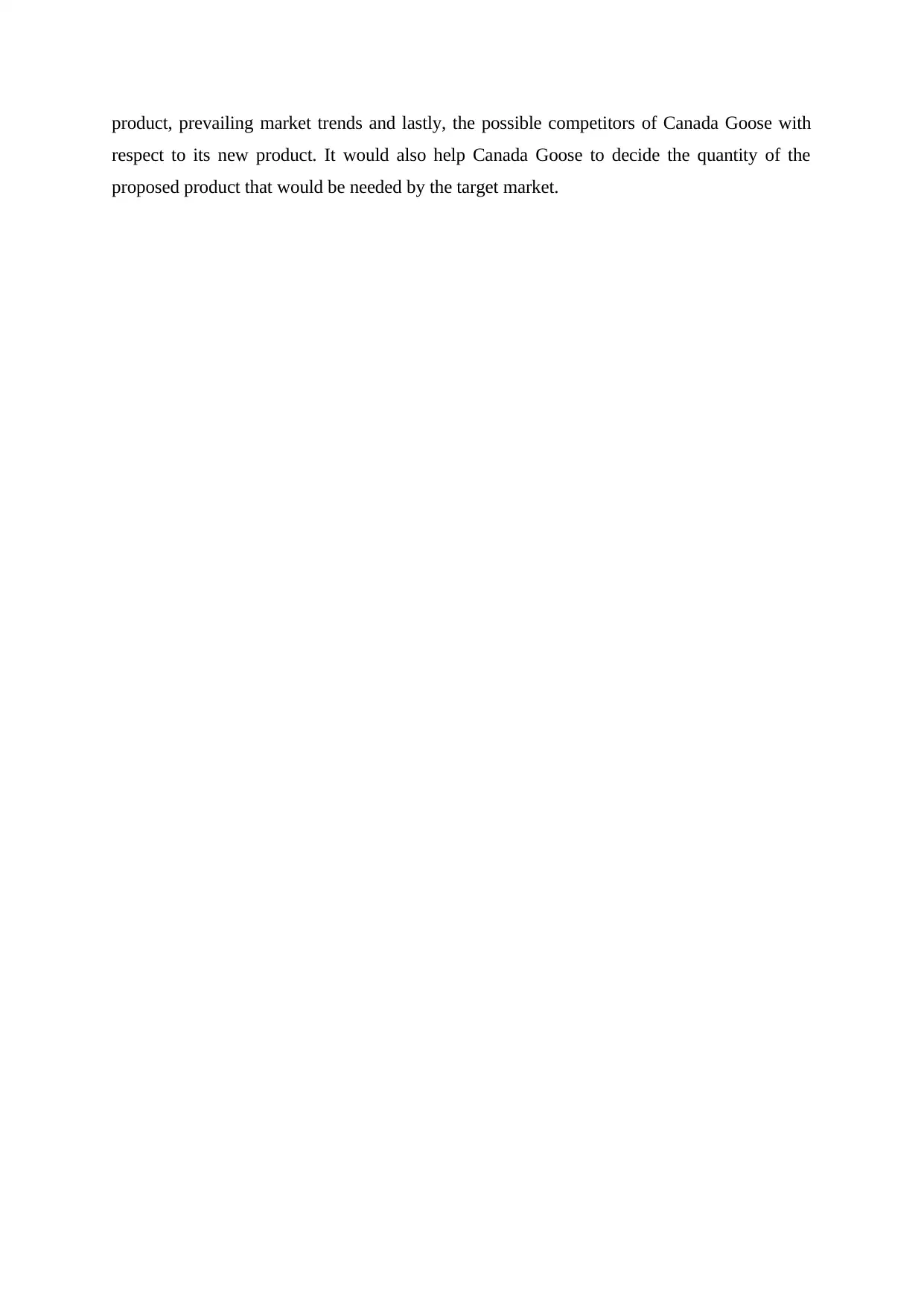Canada Goose Global Marketing Plan Research Report - Seneca College
VerifiedAdded on 2022/09/24
|3
|513
|27
Report
AI Summary
This report presents a detailed analysis of the Canada Goose global marketing plan, focusing on a new product line. It begins by outlining the five-step market research process, including defining the problem, analyzing the situation, gathering data (both qualitative and quantitative), interpreting the data using techniques like SPSS, and developing conclusions to inform decision-making. The report addresses the need to understand the target market and existing competition. It also covers key components of the marketing plan such as exploring market opportunities (market penetration, market development, product development, and diversification), identifying influencing environments (economic, technological, political/legal, and social factors), defining target market segments, and discussing product branding considerations, including potential changes to product features, packaging, and value propositions. The research incorporates primary data collection methods such as interviews and surveys to gather insights into consumer needs and market trends. The report is based on an assignment from Seneca College and includes references to marketing principles and concepts.
1 out of 3







![[object Object]](/_next/static/media/star-bottom.7253800d.svg)